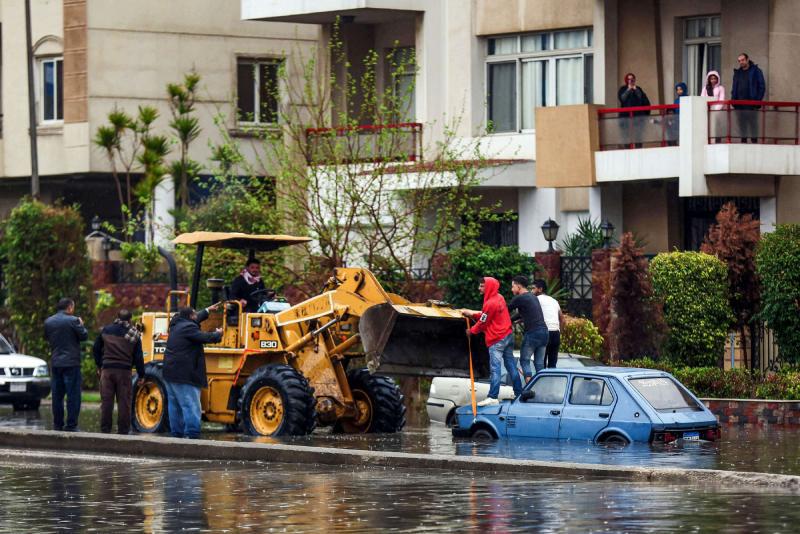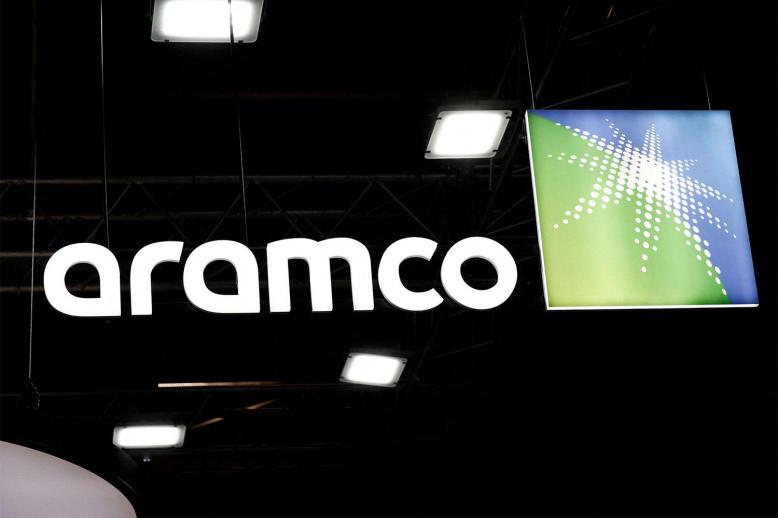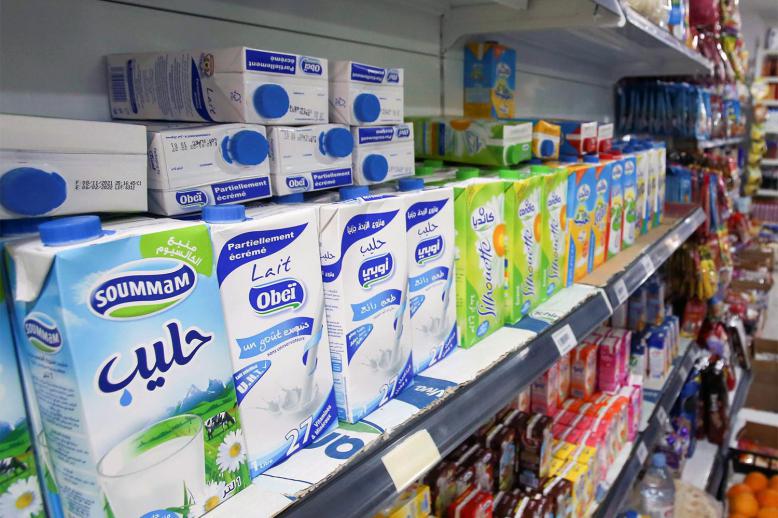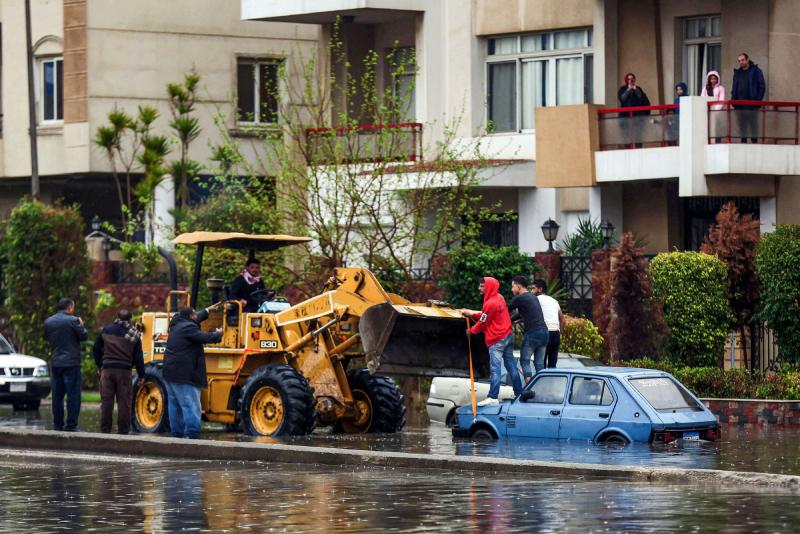Storm exposes inadequacies of Egypt's infrastructure projects
CAIRO - The huge 3-day thunderstorm - dubbed Dragon Storm - that struck Egypt revealed the inadequacy of drainage infrastructure in some industrial areas, which was unable to drain off the rainwater.
Analysts said vulnerabilities that emerged in new projects threaten reviving the economy because domestic and foreign investors may have to review plans.
At least 20 people were killed in the deluge that hit the region in mid-March. Citizens shared pictures and videos of cars floating on streets inundated by rain, flooded luxurious villas and collapsed homes in unprotected zones.
The Dragon Storm caused in losses of up to $76 million in the electricity sector and road infrastructure, government estimates state, in addition to losses to private property that could amount to twice the initial losses.
It was estimated that more than 14 million cubic metres of rain fell during the storm, equivalent to 1% of Egypt's annual share of Nile water.
Industrial zones around Cairo were hard hit and factories closed because the facilities could not withstand the onslaught of rain.
Heavy losses in Cairo led the Egyptian Federation of Investors Associations to call an emergency meeting to discuss compensation for damaged factories but the situation was complicated because of urgent precautionary measures to address the coronavirus pandemic.
Mohamed Saad, vice-president of the federation, said most new cities in Egypt suffer from inadequate infrastructure and climate change was not considered in their designs. He added that the federation had monitored damage to factories and the virtual drowning of the oldest industrial zone in Egypt in 6th of October City.
None of the drainage stations in the new cities was equipped with emergency systems to deal with flood conditions, even though some of them, such as New Cairo City, are in or near flood zones.
Hisham Kamal, president of the Association of Investors in a Thousand Factories in New Cairo, said the infrastructure was worn out, even though the area is considered vital and is home to some of Egypt’s wealthiest people.
He explained how torrential rains flooded the drainage station in New Cairo and how the industrial zone in New Cairo was swamped. The city services mobilised tanker trucks to drain the water but faced the problem of finding a nearby place to dispose the collected water.
Sewage and drainage stations were sited far from the industrial zone, which made them inadequate during the Dragon Storm.
The New Cairo Authority cut off water from the industrial zone for up to five days, to remove damage caused by the storm.
Experts demanded that the drainage stations be surrounded by protective walls while additional relief drainage locations are established.
Egypt does not have a system to take advantage of rainwater, even though collecting and treating rainwater is less costly than treating sewage. Rain drainage is added to the system of wastewater despite the urgent need for more water resources.
Investors Federation officials said most factories in 10th of Ramadan Industrial Area, about 45km from Cairo, Damietta on the Mediterranean and Burj Al-Arab in Alexandria governorate had halted activities, which increased the country's economic losses.
The government said Egypt needs to invest $13 billion - $19 billion to prepare the infrastructure to cope with natural disasters. The Dragon Storm was the first strong test of the country's facilities.
Hussein Sabour, president of Al-Ahly-Sabour Real Estate Development Company, pointed out that the infrastructure projects for storm water drainage are among the most expensive, with planners disputing the efficiency of spending exorbitant sums to cope with heavy rains that occur only 7-10 days a year.
He pointed out in a statement that there have been proposals for establishing a system for storm water drainage and collection and using it to generate electricity but they were rejected as impractical by the government.
That has resulted in a repeat of severe floods every year and that precipitates the destruction of basic infrastructure and increases the loss of lives.
Adam Zayyan, founder of Al-Ahed Real Estate Marketing Company, said the company’s real estate barometer indicated a drop in demand for new villas in New Cairo, especially for those with underground car parks because of fear of a repeat of the Dragon Storm havoc.
The Egyptian government told citizens to observe a compulsory vacation until floods recede but the government does not seem too keen on learning from such events. Dragon Storm was the second of extremely intense and damaging weather system in Egypt this year.
Some estimates say Egypt’s sewage and water network needs $199 million-$255 million annually for operations and maintenance but the government allocated about $95 million for that in this year’s budget.
Urbanisation rates are increasing in Egypt and overpopulation demands an urgent upgrading of the infrastructure that cannot cope with new conditions.
Mohamed Hammad is an Egyptian writer.
This article was originally published in The Arab Weekly.






